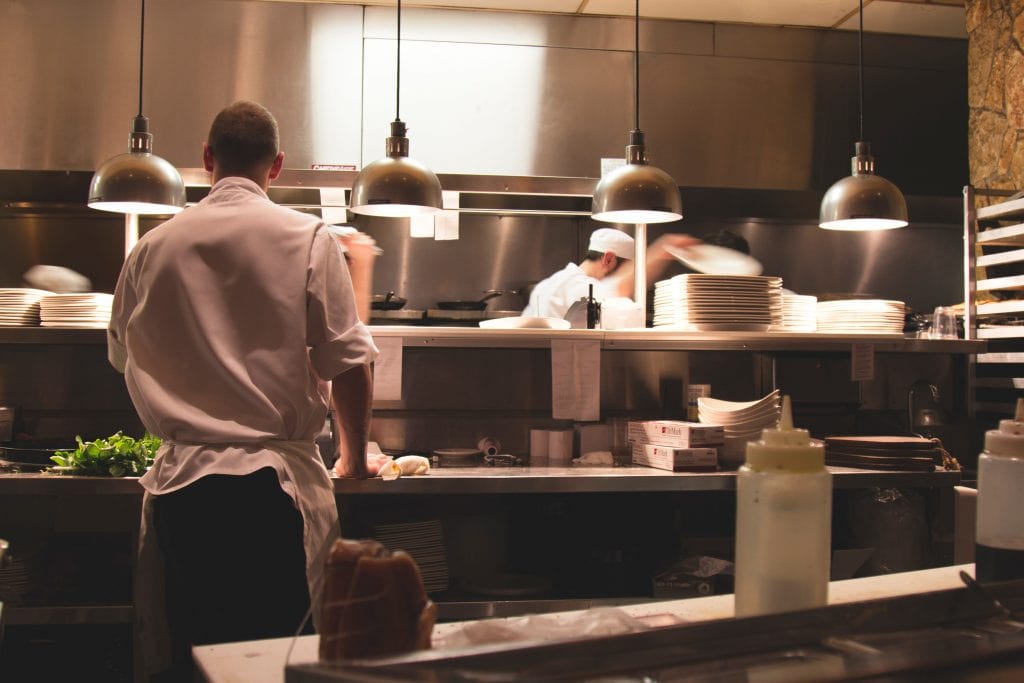Food waste is a mounting problem around the world. In Singapore, the F&B industry is one of the most detectable areas of food waste. According to an estimation, 1.3 billion tons of food is wasted globally – with 40 percent of it coming from restaurants and other different food businesses. Landfills are now brimming with wasted food that could have been donated, repurposed, or composted.
As per the estimation provided by End Food Waste Now, a restaurant disposes an average of 68,000kg of garbage a year. Most of this comprises mainly of food waste. Food waste not only increases restaurant costs but is also severely damaging to our planet. Therefore, we have a list of easy and helpful techniques you can use to reduce restaurant food waste significantly. Let’s get into the details!
1. Adopt Restaurant Waste Management
Organising waste management will help minimise restaurant food waste to a minimum, and make use of existing waste in the best possible way. However, to organise successful waste management, you will need to:
- Build a team of responsible individuals for this job
- Track and evaluate waste in a restaurant manually or digitally
- Analyse the documentation on bought items and consider your business decisions
- Review inventory regularly in order to compare buying and quantity of waste
- Trim the menu to reduce the amount of leftovers
- Reuse everything that can be reused
2. Have Kitchen Prep Lists for Cooks
Most restaurants use batch preparation methods to save time, but it only results in over-prepared food which may not be used. Giving every cook a kitchen prep list would be immensely helpful as it will tell them how many ingredients to prepare each day and in what amount.
These techniques will help reduce the amount of overprepared food and thus, decrease food waste. It is a win-win situation as your customers will also get to enjoy freshly prepared food. Do not forget to follow the 2 Hour/4 Hour Rule and have the food out of the Temperature Danger Zone (5°C – 60°C).

3. Manage Restaurant Inventory
An overstocked inventory may give you the feeling of being prepared, but it actually leads to significant food waste. This can happen by misplacing your food items, forgetting about them. In some cases, they might even be stolen! Most restaurants tend to order more ingredients to be safe. However, most food items typically are not used and exceed a restaurant’s expenses. However, this issue can be dealt with by observing order and usage trends and then determining the ideal quantity to purchase. You might even consider using similar ingredients across the menu.
A lot of ingredients get thrown away because they get expired. The best way to manage inventory is to employ the first-in, first-out (FIFO) method. Previously purchased items and those with earlier expiry dates should be placed in the front row to make sure they are used first. Make sure that everyone who handles ingredients in the kitchen is adequately trained in First In, First Out inventory management techniques.
4. Reuse
Food waste is inevitable when it comes to food preparation. However, you can find creative and innovative ways to use such leftover (but fresh) ingredients. You could even turn them into other dishes!
For example, vegetable scraps can be used to make vegetable stock, and shred leftover chicken can also be used to make chicken and vegetable soup. Instead of throwing stale bread, it can be roasted into the oven for a little time and used to make breadcrumbs.
Food leftovers and ingredients which are safe to consume can be used to make staff meals. It will also allow the restaurant to save money on staff treats.
5. Donate
There are several charities across the country that take suitable food from restaurants and different food businesses to distribute to the homeless and others in need. You can provide safe to eat leftovers to local food shelters. In this way, not only food waste will be reduced, but you will also be helping the community.
6. Start Taking Inventory Daily
Taking daily inventory will reduce the chances of food waste and also allow for fresher and better-tasting food.

7. Mention Dates on Frozen Items
For frozen items, mark them with dates, so you use them before they get stored away for too long. Make sure the staff understands expiration dates like “Best by,” “Use by” and “Sell by” to avoid food waste.
8. Examine Before Purchase
Whether it is vegetables, fruits, dairy, or any other food item, take a close look to see how long more does it take for it to be ripe, or to become spoilt or expired. It will allow you to purchase the ingredients that would stay fresh a little longer.
9. Measure Food Waste
Through tracking food usage and waste, restaurants can scale back production while still meeting their customer demands. A “food waste inventory” can assist in identifying how much and in which areas food is wasted. This could help owners and managers to implement changes accordingly, such as tweaks in the menu, smaller portions or substitutions. Monitor progress and adjust accordingly.
10. Predict Food Orders
Having a system in place to assist in accurate food order prediction is a great way to reduce food waste. It can be done manually or with the help of digital technology, such as predictive ordering technology. By providing more accurate data and a better understanding of food order patterns, it will ultimately lead to better control over the kitchen and thus, less waste and better profit.
11. Compost
For food scraps that cannot be used, composting is a sustainable option for a restaurant. Composting refers to using your food scraps as a form of fertiliser for your plants. Many restaurants use compost from the kitchen to enhance the soil in vegetable and fruit gardens or as a natural enricher for landscaping. Composting also helps to reduce environmental impact by keeping waste out of our landfills.
By using these practical techniques, restaurant food wastage can be reduced significantly to help save both money, and the environment.










